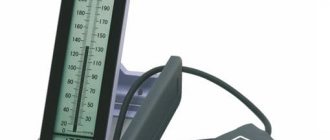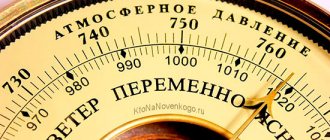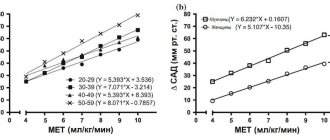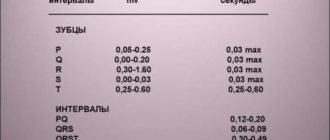Like humans, the average blood pressure in a cat is 120/80 mm Hg. Art. To measure the indicators, a special veterinary tonometer is used. If the value deviates from the optimal level, detailed diagnostics should be carried out and the causes of the violation should be found out. Like people, cats suffer from hypertension and hypotension. These diseases negatively affect the general condition and functioning of the pet. Therefore, it is important to establish an accurate diagnosis in a timely manner and begin treatment.
What are the norms?
Blood pressure (BP) shows the condition of the vascular walls, their physiological resistance, as well as heart rate. The indicator is measured in millimeters of mercury - mmHg. Art. and consists of two values separated by a fraction sign. The first indicator characterizes the level of blood pressure on the walls of the vessel at the moment of maximum heart contraction. The second is the strength of blood pressure at the moment of greatest relaxation of the heart muscle. Normal blood pressure in cats is the same as in humans and averages 120/80 mmHg. Art. If something is wrong with the body and pathological processes develop inside, blood pressure becomes low or high. The main thing is to notice these changes in time and, if necessary, try to eliminate them.
Symptoms and signs of blood pressure in cats
Since the symptoms of the pathology may not be obvious to cat owners, the doctor must collect a complete medical history. With a stable high level of pressure, the pet experiences severe thirst, frequent urination, and sometimes vomiting.
As in humans, hypertension in cats can cause intraocular hemorrhages. In this regard, the cat owner can pay attention to the following symptoms:
- the cat bumps into objects;
- changes in eye color or iris;
- orientation in space is disturbed;
- the cat develops intolerance to physical activity;
- vision is lost completely or partially;
- there is causeless restlessness and meowing;
- blood flows from the nose;
- The paw pads become engorged and the limbs swell.
The cat also develops neurological abnormalities:
- lethargy (pathologically long sleep);
- stupor;
- convulsions;
- impaired coordination of movements.
With a detailed examination, the veterinarian can detect left ventricular hypertrophy and hemorrhages in the retina. More severe pathologies of the visual organs in hypertensive patients are massive retinal detachment, glaucoma and blindness.
Seizures may indicate intracranial hemorrhage (hemorrhagic stroke) or hypertensive encephalopathy in a cat. Neurological pathologies often indicate an unfavorable outcome of the disease.
During the examination, the veterinarian evaluates:
- behavior and gait;
- consciousness;
- coat condition;
- color of mucous membranes;
- respiratory activity;
- size and condition of the thyroid gland and kidneys.
Decompensated hypertension leads to the animal's shortness of breath, frequent fainting, cessation of urination or weak urination, rapid heart rate (tachycardia), the appearance of protein in the urine, and pulmonary edema. With a significant increase in the left ventricle of the heart, a powerful cardiac impulse in the sternum and cardiac “galloping” murmurs are observed.
Why measure?
Measuring blood pressure in dogs and cats must be carried out periodically, so that if any disorders progress in the body, they can be noticed in a timely manner and eliminated before complications arise. Blood pressure must be measured at a preventive appointment, which helps reduce the risk of sudden development of a crisis, heart and kidney failure, endocrine and hormonal disorders. The indicators are monitored during and after surgical treatment, because during surgery there is always a risk of internal bleeding and a sharp drop in blood pressure.
Leading veterinary experts advise measuring blood pressure once a year in cats that have reached 5-7 years of age. If Murka is 10 years old or older, measurements should be taken at least once every six months.
General information
It is advisable to measure systolic blood pressure in any cat.
with signs of end-organ damage, including cats with chronic kidney disease, retinopathy or choriodiopathy, neurological signs (ataxia, seizures, coma, paresis), cardiovascular signs (dyspnea, cardiac murmur, galloping rhythm, arrhythmia) or epistaxis.
Systolic blood pressure should also be measured in cats that are overweight and if thyroid disease (aggression, weight loss, increased appetite, ruffled coat) or adrenal disease (alopecia, polyuria, polydipsia) is suspected. Given that chronic kidney disease and hyperthyroidism are the most common causes of hypertension in cats. It is reasonable to recommend measuring blood pressure in any cat over 10 years of age.
Systolic blood pressure should be measured at the beginning of the physical examination.
, after adaptation and getting to know the cat. This avoids artifacts caused by anxiety, increases or decreases in blood pressure, known as the “white coat effect.” For non-invasive tonometry in cats, there are two methods: Doppler sphygmomanometry and high-resolution oscillography. To minimize the “white coat” effect, we took the cat and owner into a quiet consultation room away from extraneous noise, such as barking dogs. Five to ten minutes of rest were always provided to allow the cat to acclimate to these conditions.
To measure pressure, you can use the pectoral, pelvic limbs and tail. We preferred to perform tonometry on the caudal artery. We carefully selected the width of the tonometer cuff. The width of the cuff should be 40% of the circumference of the limb. A thinner cuff overestimates blood pressure, while a wider cuff underestimates it.
The cat's position during tonometry can be sitting or lying on its chest. In some cases, it is preferable to perform tonometry on the caudal artery while placing the cat's front part in a carrier in a pouch or crate. There is no need to remove fur for this measurement. The cuff should be positioned at heart level.
How to measure pressure?
For this procedure, a special digital device is often used.
Various techniques are used to measure blood pressure in cats. The safest and most accurate is to record indicators using a mechanical or digital veterinary tonometer. The cuff is fixed to the paw or tail, then the air should be inflated using a bulb. The finished value will appear on the digital monitor. For greater accuracy and reliability of the data, it is recommended to measure the pressure several times.
The “gold standard” for measuring blood pressure is a direct method performed by peripheral artery catheterization. The procedure is invasive and requires anesthesia to reduce the cat's motor activity, so it is used in extreme cases. Depplerography, ultrasound, photoplethysmography methods are used in advanced veterinary clinics, as they require modern, high-tech equipment. Accordingly, the price of the procedure will be higher.
What can cause high blood pressure?
Arterial hypertension in cats is diagnosed when blood pressure exceeds 150/95-110 mm Hg. Art. In this case, the animal is closely monitored and data is regularly recorded. If the values fluctuate at 160/120, complex drug therapy is urgently prescribed. A blood pressure of 180/120 is considered critical. With such indicators, a hypertensive crisis can occur at any time. In this case, the cat is hospitalized and given emergency care. Based on etiology, there are systemic, secondary and pulmonary hypertension in cats.
Common causes of high blood pressure in cats are:
Indicators may be elevated in animals suffering from diabetes.
- cardiac and vascular pathologies;
- kidney and adrenal dysfunction;
- dysfunction of the thyroid gland;
- progression of systemic pathologies, for example, diabetes.
Portal hypertension, in which high pressure is recorded in the portal veins, can be caused by the following pathologies:
- thrombosis of large vessels;
- splenomegaly;
- hepatitis of various types;
- cirrhosis or fibrosis of the liver;
- cardiovascular diseases.
Treatment of blood pressure in cats
Before treating the disease, diabetes mellitus, hyperaldosteronism, and kidney disease should be excluded. The doctor prescribes a routine examination, including blood pressure measurement, laboratory tests of blood and urine, serological tests for retroviral infection, echocardiography, and ultrasound.
Basic therapy is to control the pathology that led to hypertension. To reduce blood pressure, the cat is prescribed antihypertensive drugs, subject to constant monitoring of blood pressure.
For persistent high blood pressure, Amlodipine is prescribed in a strictly calculated dosage. β-blockers (Atenolol), diuretics and ACE inhibitors are also indicated, which give good results in case of concomitant renal pathology and heart failure. More often, β-blockers are prescribed for diseases of the thyroid gland (hyperthyroidism). Diuretics for renal failure are given to cats under the control of their daily diuresis.
A hypertensive crisis in an animal is treated in a clinical setting. The veterinarian applies:
- Amlodipine;
- Hydralazine;
- Esmolol intravenous drip;
- Labetalol infusion;
- Enalaprilat if necessary.
The success of therapy lies in the complete or partial elimination of the pathology, maintaining the target organs in a normal functional state. In addition to blood pressure monitoring and drug treatment, the cat needs a sodium-restricted diet. The use of diuretics should be accompanied by the inclusion of potassium-rich foods in the diet.
To adjust treatment, you should undergo a preventive examination by a veterinarian at least once every 3 months. If the drugs do not reduce blood pressure, they are replaced with others or the dosage is increased.
Main reasons for the decline
In cats, hypotension is rarely diagnosed, and the condition often progresses against the background of other primary pathologies. Arterial hypotension does not occur on its own. The primary sources of low blood pressure are:
Anesthetic drugs may slightly reduce these indicators.
- heavy internal and external bleeding;
- state of shock;
- exposure to anesthetic during surgery;
- uncontrolled use of certain groups of drugs.
Reasons for deviation from the norm
Life-threatening conditions develop with a stable deviation from the norm. An excess is called hypertension, and a too low value is called hypotension.
Promotion
A sharp increase in pressure is caused by any stress on the heart. The indicator increases after stress and any activity, but returns to normal quite quickly and without outside help. If this does not happen, then the animal is diagnosed with hypertension.
Depending on the cause of its appearance, hypertension can be primary or secondary. In the first case, the syndrome develops independently and has no accompanying symptoms, and in the second case, against the background of concomitant diseases:
- cardiovascular pathologies (heart failure);
- endocrine disorders (diabetes mellitus, Cushing's syndrome, hyperthyroidism);
- kidney and liver diseases (fibrosis, cirrhosis, hepatitis, failure).
At risk include overweight pets and older cats. Long-term hypertension is fraught with the development of glaucoma, complete blindness, urolithiasis and other dangerous complications.
Demotion
Cats are less likely to suffer from hypotension. It does not develop on its own and is always explained by the following reasons:
- prolonged stress;
- complications after anesthesia;
- poor nutrition;
- heavy blood loss;
- uncontrolled use of certain drugs;
- state of shock;
- congenital and acquired cardiovascular pathologies.
Unlike hypertension, hypotension occurs not only in older animals, but also in completely young animals. The most dangerous complication of this condition is a decrease in blood flow to the heart and brain, so it should not be confused with a temporary loss of strength.
Symptoms of horse racing
Hypertension in cats in the initial stages of development is often asymptomatic. But as the animal’s condition progresses, it becomes noticeably impaired. The cat becomes lethargic, apathetic, sleeps a lot, sometimes refuses to eat, and moves little. Other signs of high blood pressure include:
- dilated pupils;
- abundant vascular network on the cornea;
- visual impairment, retinal detachment;
- photophobia;
- disorientation in space, staggering gait;
- dyspnea;
- formation of edema on the paws;
- convulsions;
- causeless, prolonged meowing.
If the pressure rises to 180/120 mmHg. Art., the risk of developing a hypertensive crisis increases. The pet experiences a coma, increased heart rate, shortness of breath, and profuse drooling.
With reduced levels, the animal becomes excessively drowsy.
With hypotension, blood pressure drops to 90/60 or less. Sudden changes accompanied by characteristic symptoms negatively affect the general condition of the cat. When the indicators decrease, the animal exhibits the following signs:
- slow heart rate;
- drowsiness, weakness;
- fainting;
- tremor of the limbs;
- blanching of the mucous membrane.
What treatment is prescribed?
If your cat exhibits symptoms of high blood pressure, you should immediately take her to see a veterinarian. The fact is that you won’t be able to measure the indicators yourself at home, since a special veterinary tonometer is used for the procedure. An ordinary human will not show exact values. For arterial hypertension, tablets that normalize blood pressure are prescribed:
- "Amlodipine";
- "Enalapril";
- "Lisinopril";
- sodium nitroprusside.
If the pet is prone to edema, then Torasemide is prescribed.
The treatment regimen and dosage are determined by the doctor individually. In the presence of edema, diuretics must be used:
- "Furosemide";
- "Torasemide".
Treatment of hypotension is carried out only in a hospital. Self-medication at home is contraindicated. The following procedures apply:
- infusion of plasma replacement solutions;
- antishock therapy;
- injections that stimulate cardiac activity.
Why is it dangerous?
With a persistent increase in pressure, the heart works under conditions of increased stress, in addition, damage to various organs is possible.
The functioning of the brain suffers, the nutrition of certain areas is disrupted due to tissue swelling, and sometimes hydrocephalus occurs. The risk of thromboembolism increases.
In the eyes, hemorrhages, retinal detachment, and the development of glaucoma are likely. In cats, vision almost always suffers; it can even be lost, which is not restored when the pressure normalizes.
Changes also occur in the vessels of the kidneys, the number of fibrous fibers increases, which leads to impaired filtration of urine. In severe cases, renal failure develops.
Hypertension, unfortunately, immediately affects all of the above organs, which is why it is so important to detect the problem in time and begin therapy.










